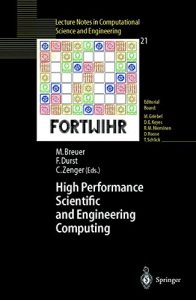
In Douglas Adams’ book ‘Hitchhiker’s Guide to the Galaxy’, hyper-intelligent beings reached a point in their existence where they wanted to understand the purpose of their own existence and the universe. They built a supercomputer, called Deep Thought, and upon completion, they asked it for the answer to the ultimate question of life, the universe and everything else. The computer worked for several millennia on the answers to all these questions. When the day arrived for hyper-intelligent beings the to receive the answer, they were stunned, shocked and disappointed to hear that the answer was simply 42. The still open questions to scientists and engineers are typically much sim pler and consequently the answers are more reasonable. Furthermore, because human beings are too impatient and not ready to wait for such a long pe riod, high-performance computing techniques have been developed, leading to much faster answers. Based on these developments in the last two decades, scientific and engineering computing has evolved to a key technology which plays an important role in determining, or at least shaping, future research and development activities in many branches of industry. Development work has been going on all over the world resulting in numerical methods that are now available for simulations that were not foreseeable some years ago. However, these days the availability of supercomputers with Teraflop perfor mance supports extensive computations with technical relevance. A new age of engineering has started.
Author: Hans-Joachim Bungartz, Michael Griebel, Christoph Zenger,
Edition: Softcover reprint of the original 1st ed. 2002
Binding: Paperback
EAN: 9783540429463
Condition: New
Manufacturer: Springer
Number of items: 1
Number of pages: 421
Product group: Book
Studio: Springer
Publication Date: 2013-10-04
Publisher: Springer
Pages: 421
ISBN: 3540429468
 Swiss Economicblogs.org
Swiss Economicblogs.org
